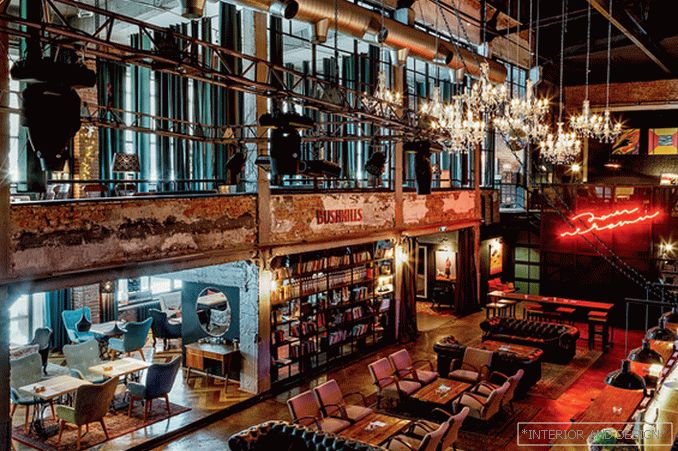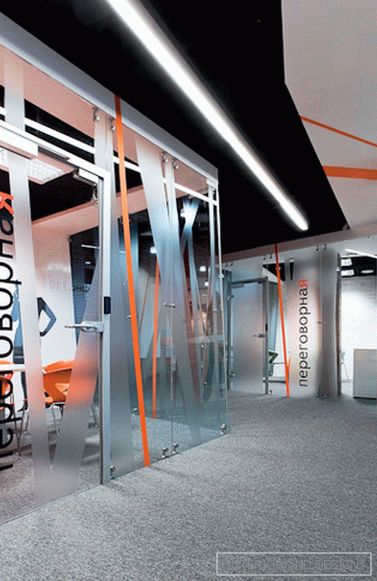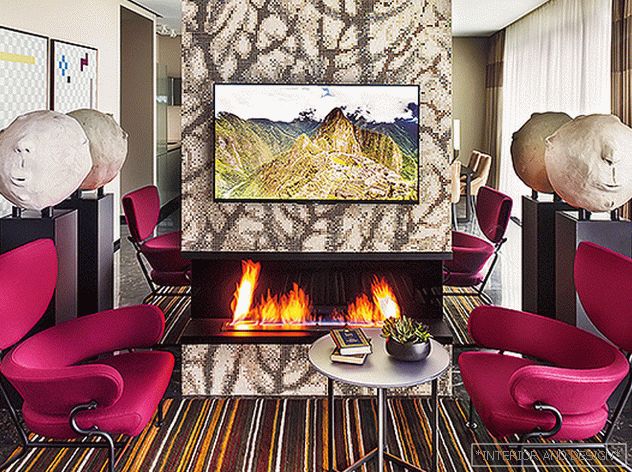Antiquarian glass never goes out of fashion. The works of Viennese Art Nouveau architects are especially appreciated. 300 masterpieces of glassblowing art, created in the first third of the twentieth century according to sketches by architects and designers in Vienna, are shown at the exhibition Il vetro degli architetti. Vienna 1900-1937 in Venice during the International Architecture Biennale.
Here are items from the Vienna Museum of Applied Art (MAK), as well as from private collections. “For the Viennese Art Nouveau, the synthesis of arts is characteristic: the architects not only built houses and villas, and the artists not only painted pictures and graphics, but also created monumental panels and interiors, jewelry, fabrics and dishes. The best possible way is modern - this is an unusually refined and sophisticated artistic direction - was expressed in the works of glass. Many famous Austrian architects of the first third of the twentieth century worked with glass, in direct contact with glass blowers, and created real masterpieces with them, ”says exhibition curator Raynald Franz, the main keeper of the MAK glass and ceramics collection.
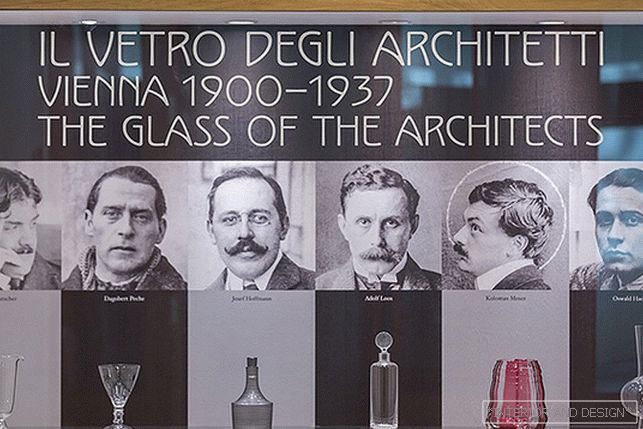 Fragment of the exhibition Il vetro degli architetti. Vienna 1900-1937. Venice, island of San Giorgio Maggiore, exhibition space Le Stanze del Vetro, 2016.
Fragment of the exhibition Il vetro degli architetti. Vienna 1900-1937. Venice, island of San Giorgio Maggiore, exhibition space Le Stanze del Vetro, 2016. In the halls of Le Stanze del Vetro - vases, glasses, cups, decanters created by Joseph Hoffman, Koloman Moser, Joseph Maria Olbrich, Leopold Bauer, Otto Prutcher, Oscar Strnadom, Oswald Herdtl, Adolf Loz. All of them, with the exception of the artist Kolo Moser, were primarily engaged in architecture, and therefore the architectural style of forms, the adjusted proportions and geometrical patterns of ornaments and details distinguish their artistic style. Actually, this manner and influenced the whole aesthetics of the Viennese modernism, formed its originality. After all, the crowns at the very beginning of the 1900s moved away from the ornateness of Art Nouveau that then prevailed throughout Europe and came very close to the geometrical refined outlines of the future Art Deco style and, in essence, anticipated them. For that time it was a very radical, very avant-garde approach. And glass was considered the best material for the realization of new aesthetic ideas.
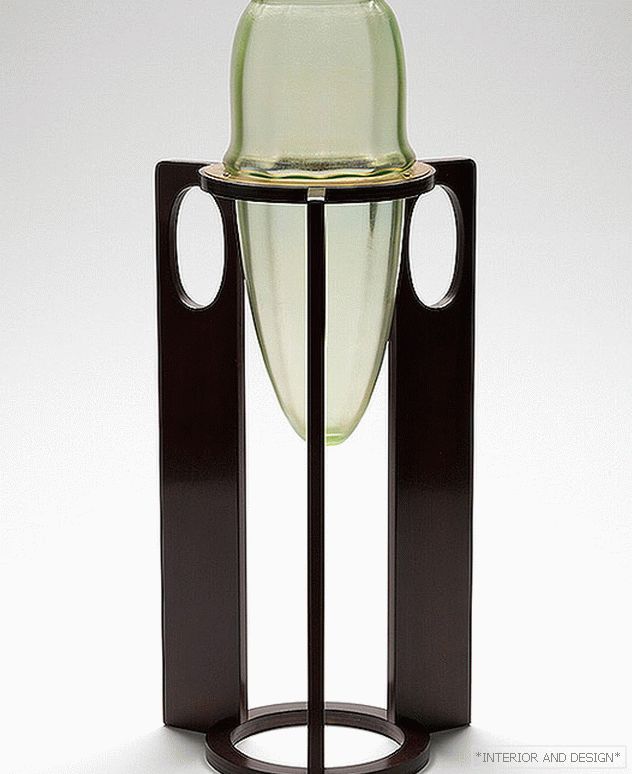 Vase of glass and wood, diz. Joseph Hoffman, 1900.
Vase of glass and wood, diz. Joseph Hoffman, 1900. The exhibition presents many works by Joseph Hoffman. Together with the artist Kolo Moser, he was the founder of the legendary creative associations of the Vienna Secession and the Vienna Workshops. The secession was formed in 1897. This name comes from the Latin secessio: withdrawal, separation. The secessionists proclaim a complete rejection of traditions in art and begin to struggle for the approval of new forms. They regularly organize exhibitions where they promote their principles.
“It’s better to work on one thing for ten days than to do ten things in one day.”
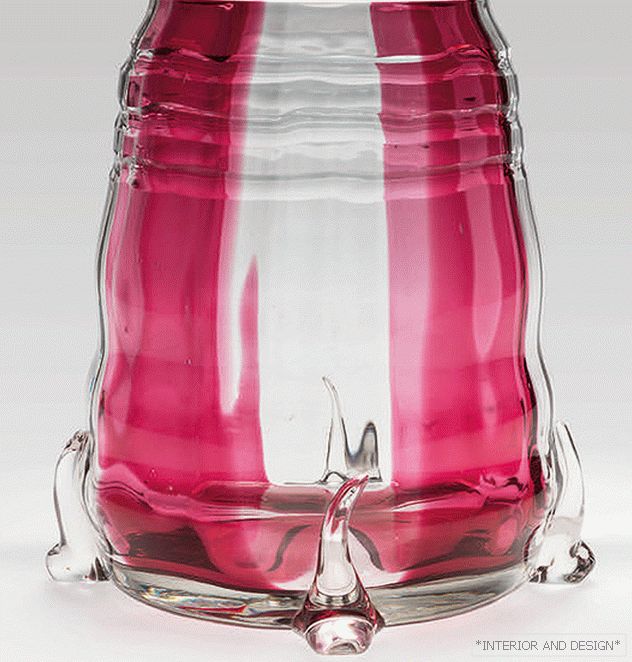 Vase of transparent and colored glass, diz. Koloman Moser, 1902.
Vase of transparent and colored glass, diz. Koloman Moser, 1902.  Painted glass vase, diz. Joseph Hoffman for the Vienna workshops, 1914.
Painted glass vase, diz. Joseph Hoffman for the Vienna workshops, 1914.  Colored glass sugar bowl, diz. Joseph Hoffman, 1914.
Colored glass sugar bowl, diz. Joseph Hoffman, 1914. 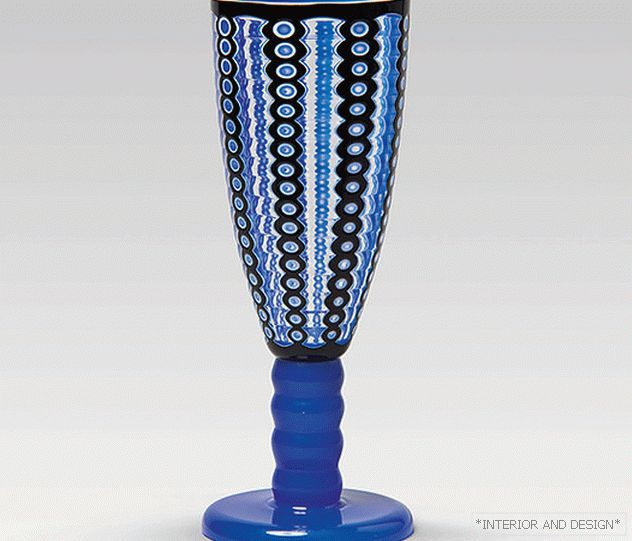 Stained glass cup, diz. Johann Ortel, until 1915.
Stained glass cup, diz. Johann Ortel, until 1915. 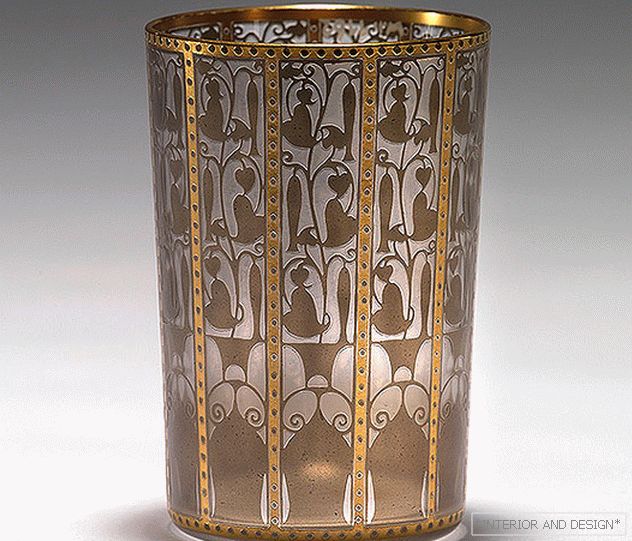 Vase of opal glass with gold, diz. Joseph Hoffman, 1912.
Vase of opal glass with gold, diz. Joseph Hoffman, 1912. Венские Мастерские просуществовали с 1903 по 1932 год и имели свои магазины в Нью-Йорке, Цюрихе и Берлине. В это художественно-промышленное объединение входили венские художники-прикладники и мастера, работавшие в новой эстетике модерна. За эстетический уровень отвечали Хоффман и Мозер, которые сами делали множество эскизов тканей, посуды, мебели, ювелирных украшений. Все вещи отличали точеные, выверенные формы и дорогое, скрупулезное исполнение. Девиз мастерских был: “It’s better to work on one thing for ten days than to do ten things in one day.”
Exhibition Il vetro degli architetti. Vienna 1900-1937 covers literally all periods in the history of glass art in Vienna in the first third of the twentieth century. Shown here are the objects created for the 8th exhibition of the Secession, held in 1900, and for the Vienna workshops. Demonstrated things that drove to the famous exhibition Werkbund in 1914 in Cologne and the landmark exhibition of Decorative Arts in Paris in 1925. As well as works of the 1920s and 1930s: a minimalist glass set for water, created by the architect Adolf Loos in 1931 and still not out of production. The glass room of Boudoir d’une grande vedette (“Boudoir of the Star”), designed by Joseph Hoffman for the Austrian pavilion at the 1937 World Fair in Paris, was reconstructed.
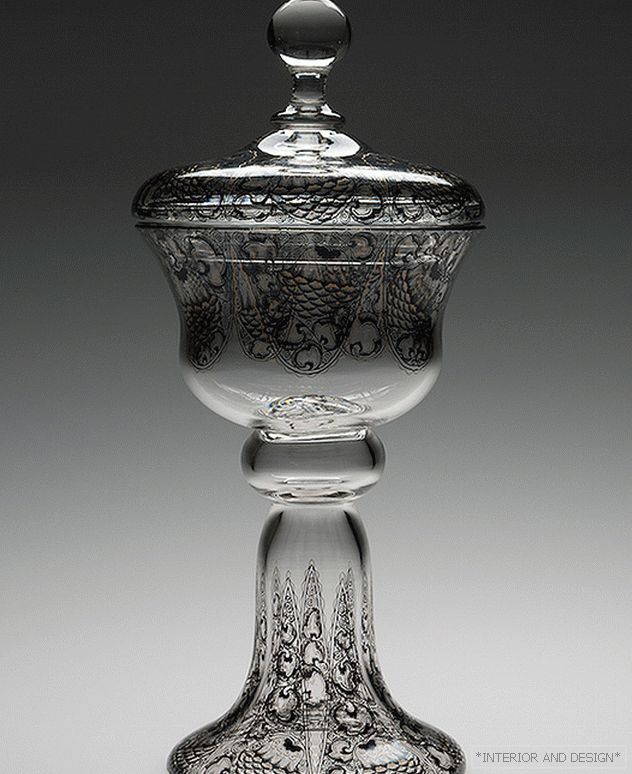 Crystal cup with blackening and gilding, diz. Karl Massanec, 1914.
Crystal cup with blackening and gilding, diz. Karl Massanec, 1914. Works of glass accompany preparatory sketches, historical photographs, wallpapers, fabrics created in Vienna workshops, and other artifacts that convey the spirit of the era. A colorful catalog has been published with illustrations and informative essays about Viennese modernism.
Il vetro degli architetti. Vienna 1900-1937 ("Glass of Architects. Vienna 1900-1937") takes place at Le Stanze del Vetro ("House of Glass") until July 31, 2016 The center on the island of San Giorgio Maggiore was created with the support and initiative of the Giorgio Chini Foundation and the Pentagram Stiftung Foundation. He is engaged in educational, publishing and scientific work related to the history and technology of hand-made glass production, which Venice is so famous for.

